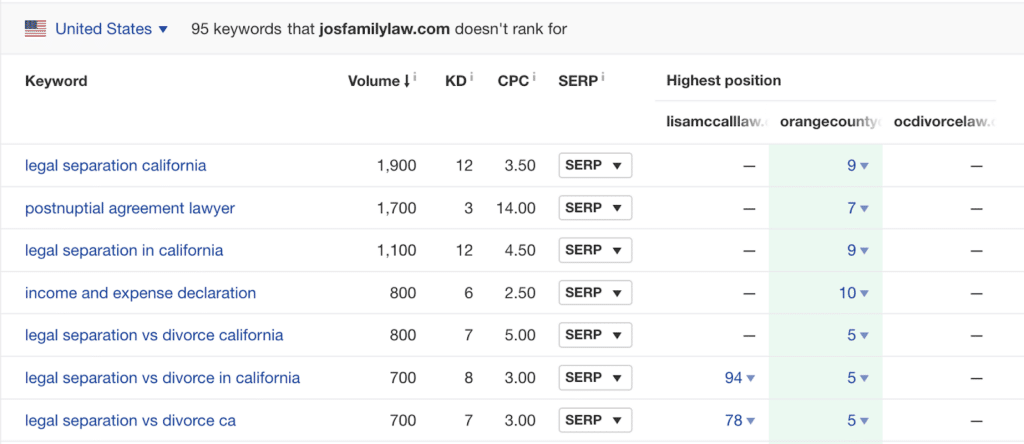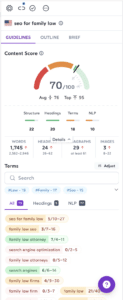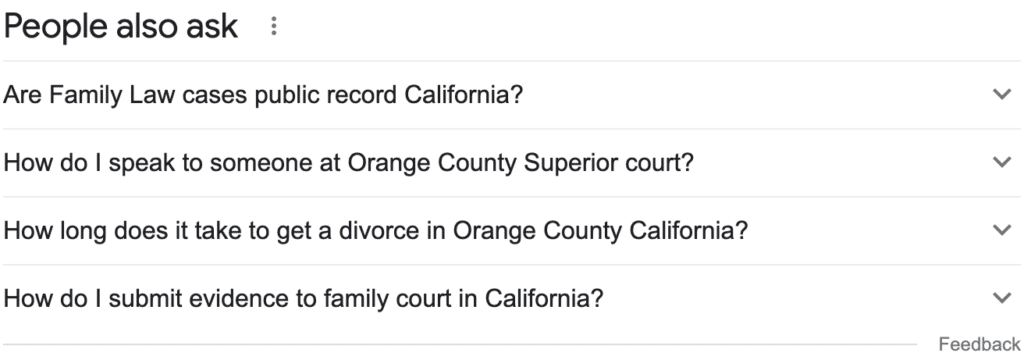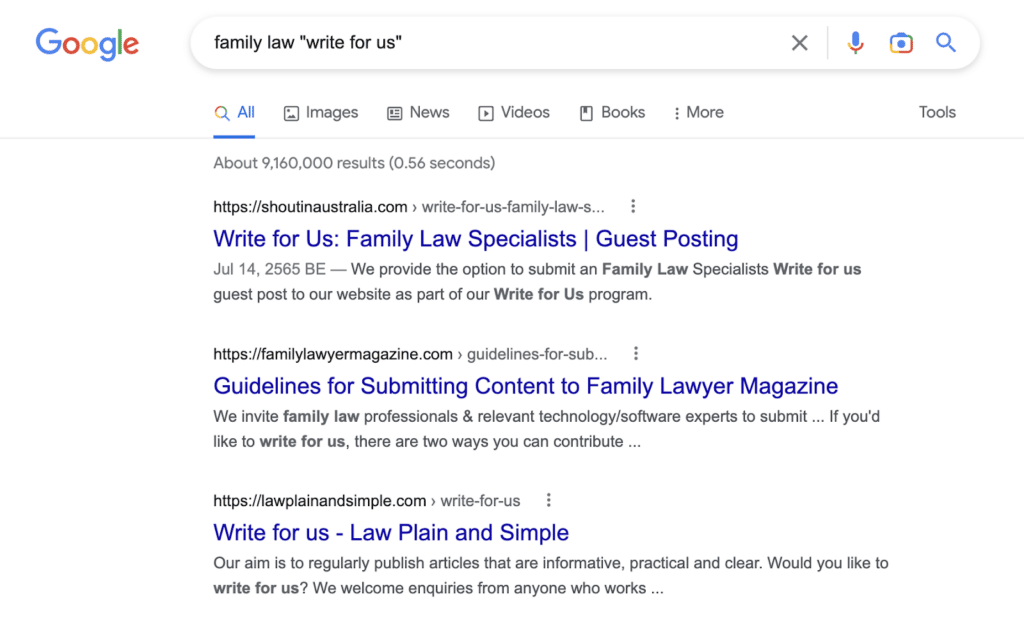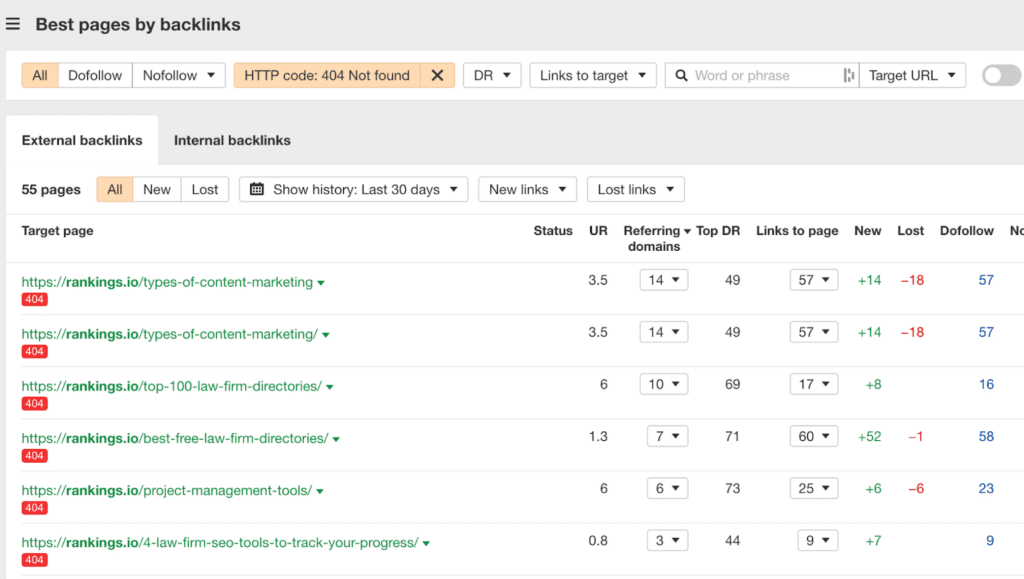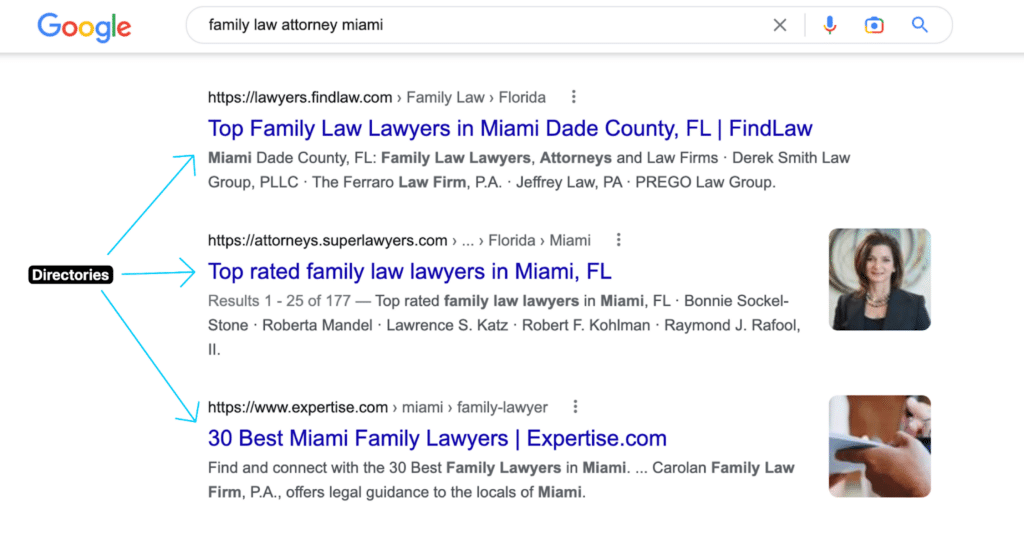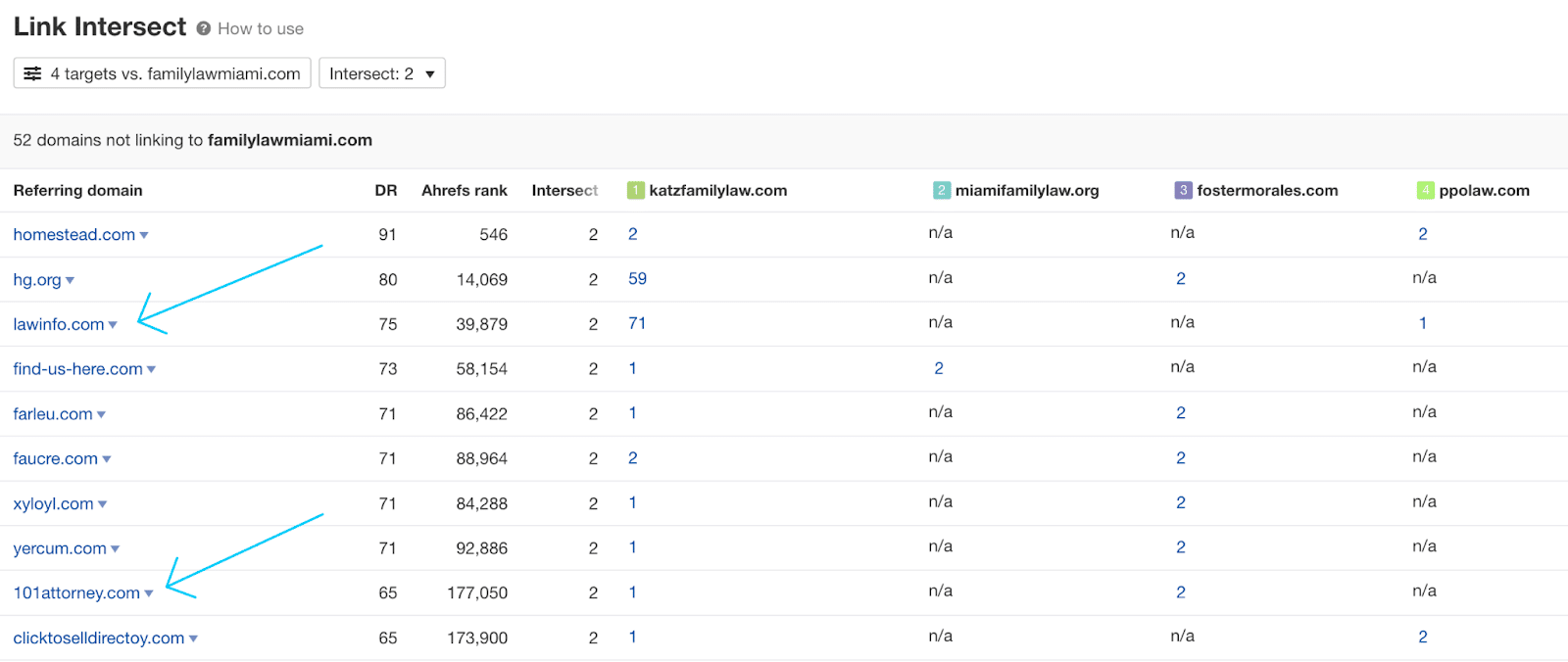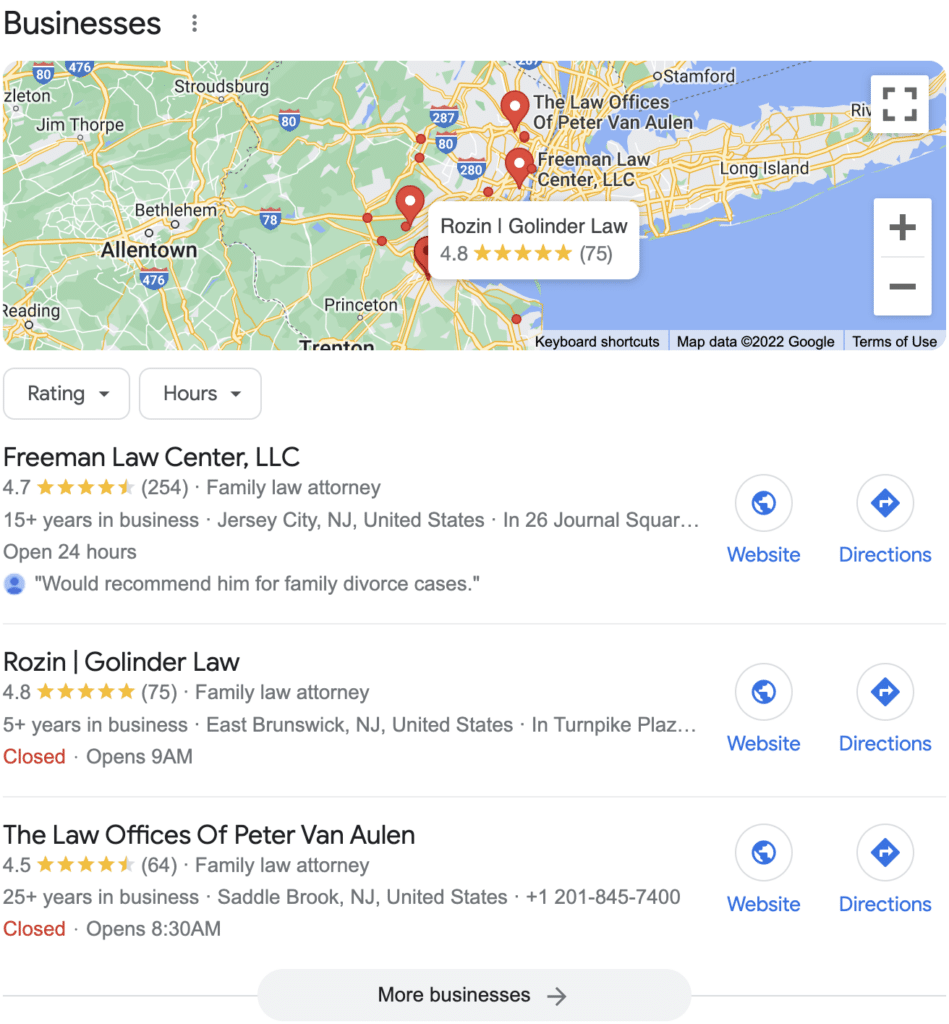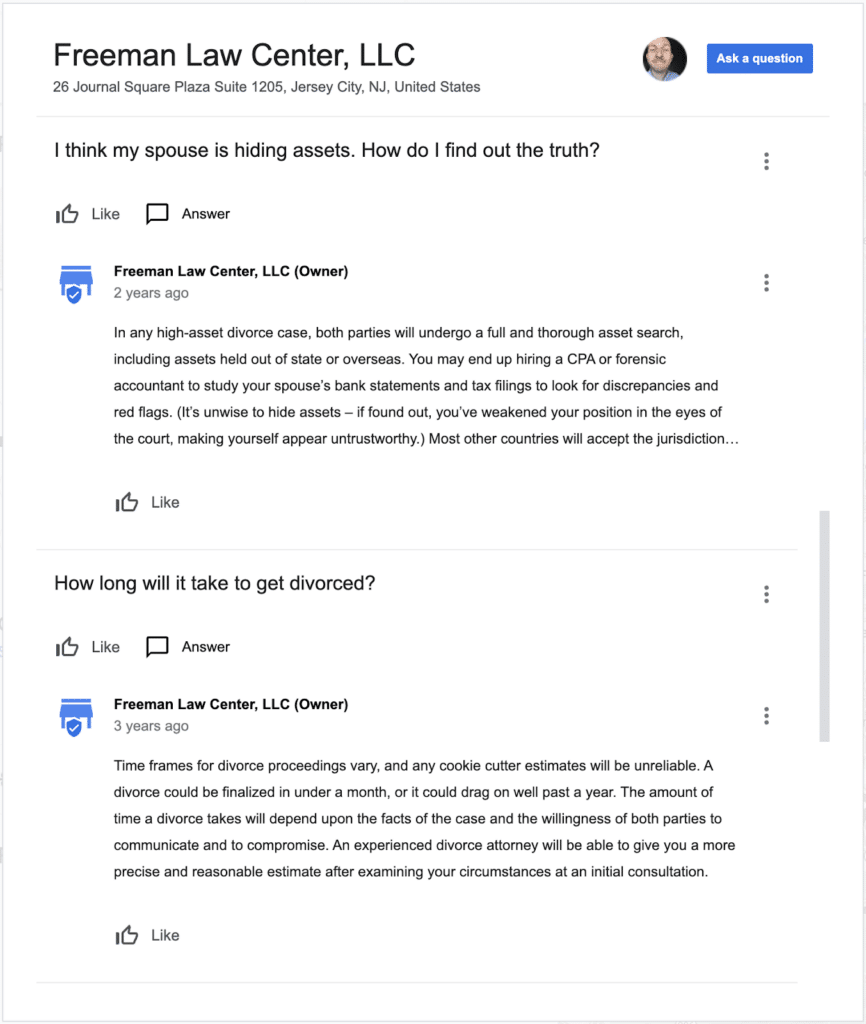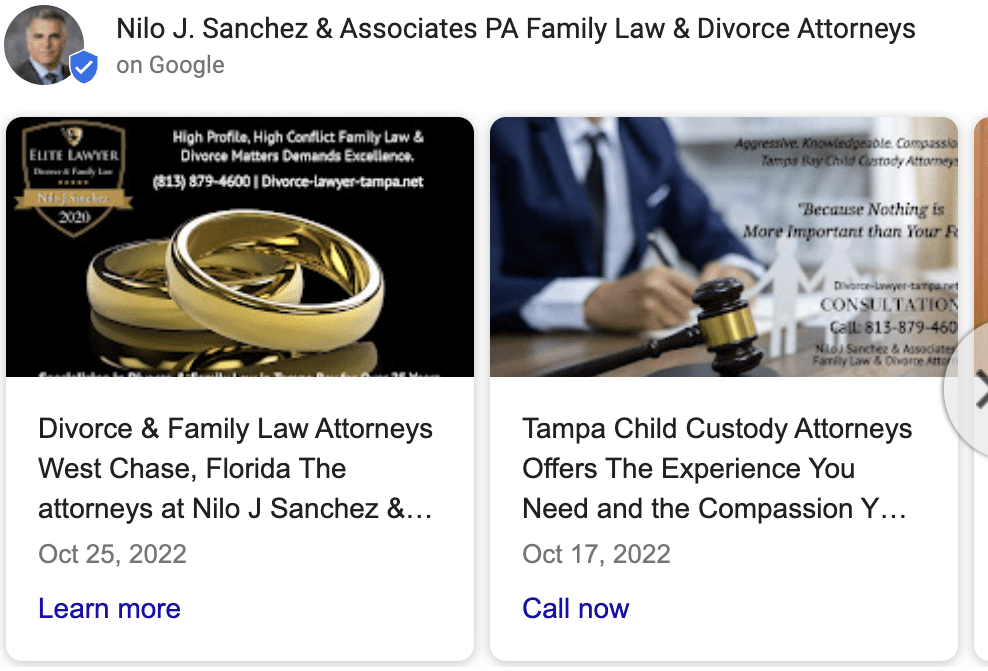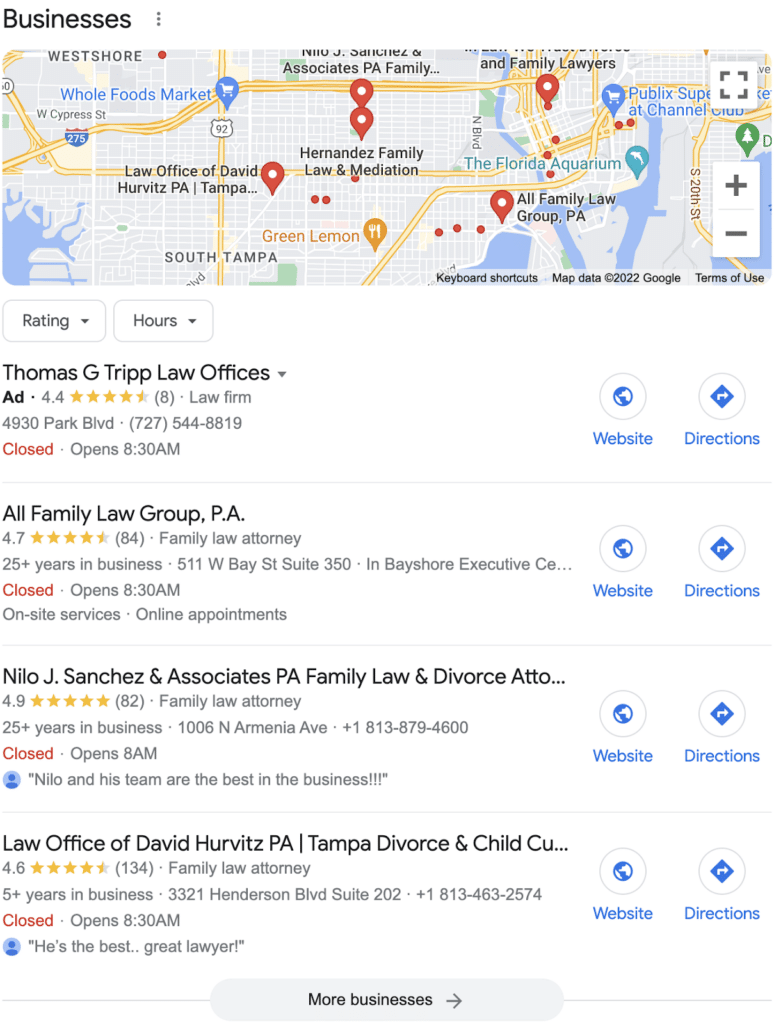SEO is a mystical beast that many have no idea what it actually is. However, it’s vital for family law firms to understand. SEO (search engine optimization) isn’t just for big family law firms to take advantage of, but it’s especially important for smaller, local firms.
If you are part of a family law firm and reading this, there’s a good chance your competitors have already put time and money into their search engine optimization campaigns. So in this blog, we’ll take a deep dive into what SEO is, how it affects family law businesses, and guide you through the core areas your family law firm should focus on.
What is SEO for Family Law?
In a nutshell, SEO for family law is optimizing your family law attorney website to be “Google friendly”. There are a whopping 200+ ranking factors that SEOs speculate Google uses when judging what position a website deserves. When optimizing websites for search engines, an SEO would go through the list of ranking factors and make sure their website is following the recommended best practices.
Why is SEO for Family Law Firms Important?
Law firms often start out with the idea that if you build a family law website, potential customers will find it. But what firms soon find out is the race to #1 is fierce and competitive. The chances are, if you haven’t started a local SEO campaign, your competitors have. Search engines are still the predominant way potential customers find businesses (with Google taking the largest piece of the cake at 92%). On top of this, local searches have an extremely high conversion rate at 80%. So the better your family law firm’s website is optimized for local searches, the better your chances are for capturing new leads.How to Create your Family Law Local SEO Strategy
When thinking about a family law SEO strategy, it can be grouped into 5 categories.- Technical SEO – Making sure the website is easily crawlable by search engines, free of broken links and slow pages
- Keyword research – using tools to research what queries potential customers are using to find your services
- On-page SEO – making sure your pages are optimized for the keywords you’re targeting
- Blogging – creating a content marketing campaign to increase awareness of potential customers at different stages of your marketing funnel
- Link building – using strategies to add links to your website on industry-related blog posts
- Google business profile – setting up your Google My Business profile to capture traffic from Google Maps and the map pack
Website SEO for Family Law Firms
To start, we’re going to go through everything you need to know about your website. There are some vital tasks that need to be done off the website (called “off-page SEO”), but a large chunk of family law SEO happens on the website itself.Technical Audit
Every good family law SEO campaign starts with a technical audit. This is fundamental because you’ll learn from the audit what is working, what needs removing, and what needs to be improved.What is a Website Technical Audit?
A technical audit essentially checks how easily Google (or users) can crawl (or navigate) your website with minimal errors. It’s vital that Google can crawl your website easily without broken links or coming across duplicate content. The fewer issues your website has, the better it will be for your family law SEO.Broken Links
The most fundamental issue you might come across when performing a technical audit is broken links. To check for broken links, you can either use a plugin like Broken Link Checker or use a dedicated website audit tool like SEO Spider by Screaming Frog or ahrefs. If you’d prefer to save money on a dedicated website audit tool, ahrefs has a free broken scanner here.Orphaned Pages
Orphaned pages are pages that aren’t linked to from other pages on the website. This can be an issue for search engines as orphaned pages can be difficult to find if they aren’t being linked to. Search engines also partly determine how important a page is to a website by how often it’s being linked to from other pages. For example, service and product pages are important to a website, so they are often linked from the main navigation. This navigation appears on every page so Google will see the products and services on a website as vital and is more likely to show them in search results. It’s important to note that the reason why a page isn’t being linked to could be intentional. For example, you might have a landing page specifically for a Google Ads campaign. Other times it could be due to an old page that isn’t being used anymore. This kind of page should be deleted.Slow Pages
If it takes time for the Google Bot to crawl a page because it’s loading slowly, this is a signal that users would have a bad experience viewing your page. Google wants to show the best, most helpful results in its search engine, but also results that have a great user experience. Offering the best results helps Google ensure that users will come back, again and again, to use its search engine.Keyword Research
Before we go into on-page optimization, it’s important to know what keyword you are optimizing your page for. This is vital because if your page isn’t what searchers expect when they type in the keyword into search engines, they are likely going to leave your website. Let’s take a look…What is Keyword Research?
Keyword research is fundamental to SEO. It’s the act of using keyword research tools like ahrefs or SEMrush to research what search terms consumers use when searching for your product or services. These tools are able to give you estimates on monthly search volume and how difficult it would be to rank. For example, for “family law attorney orange county”, this keyword has an estimated 500 searches per month. It also has the lowest keyword difficulty score. This could be a good keyword to optimize a homepage for.Location-Specific Keywords
You might have noticed in the keyword examples above, they are all contacting the location “orange county”. This is really important for family law SEO. Not only because location-specific searches have a higher chance of turning into customers, but optimizing for a specific location gives you a better chance of ranking for that keyword.Content Gap Analysis
A secret weapon in an SEO’s toolbox is something called a “content gap analysis”. This method compares keywords your competitors are ranking minus the keywords your website is already ranking for. You can then see if these missing keywords are relevant to your business and, if they are, create pages around them. Content gap analysis saves a lot of time compared to more manual keyword research. You’re basically using the success of your competitors as inspiration for your content.Searcher Intent
Whilst researching your main keyword, it’s important to consider its “searcher intent”. In other words, does the content of the page match users’ expectations with searches using this keyword? There are different types of searcher intent, but the 2 most important to consider are;- Information intent – people looking for information. Searches like, “divorce rates in California”
- Commercial intent – people who are close to making a purchase. Searches like, “family law attorney orange county”
On-Page Optimization
On-page optimization is the process of writing content that matches the searcher’s intent with keywords related to the product or service. I’ll go through the key things to consider when optimizing your page for better rankings.Primary Keyword Positions
Once you have your chosen keyword, you should add this to 4 areas on your page.-
- Title tag – For example, “Family Law Attorney Orange County – Law Firm Name”
- Meta description – For example, “Law Firm Name have been practising family law for 10 years. We are Orange County’s most trusted law firm. Contact a specialist today”
- Heading – For example, “Family Law Attorney Orange County”
- Body – Add the main keyword into the body text. For example, “Family Law Attorney Orange County”
Secondary Keywords
Secondary keywords are words closely related to the main keyword that help add additional context to the page. This helps the searcher and Google understand the bigger picture of what the page is about. For example, if your main keyword is “family law attorney orange county”, some secondary keywords could be “lawyer”, “divorce”, “separation”, or “adoption”. A useful tool to help fill your content to generate secondary keywords is Surfer SEO. Surfer SEO will compare pages in the top ten for your chosen keyword and give you suggested usage frequencies for related keywords. Along with ahrefs, this is another tool we use at Pronto to ensure our client’s websites (and this blog) have the best chance of ranking.Content Length
A huge part of ranking pages is content. All pages need some content to help Google understand what the page is about, but the amount depends on the searcher’s intent. For example, if you’re searching for pictures of a courtroom, you probably don’t want to see a block of text and instead want to see picture-heavy content. The best way to know how much content to write is, again, referring to Google. Perform a search for the keyword you want to rank for, then look at how much content the ranking pages have. Try to aim for around the same length. A quick way to know the right content length is again with Surfer SEO. Once you’ve chosen your competitor pages, Surfer will let you know the optimal length for your content.Frequently Asked Questions
Adding an FAQ to your page is a great way to naturally add secondary keywords while removing barriers to entry for users who want to call but they have important questions that need to be answered. A simple way to get these questions is by checking Google. Simply search for your main keyword and look for the “People also ask” section. If you can’t see this section, try slightly changing the keyword by adding or removing words. Try to pick the most relevant questions for your page and businesses.Increase Awareness with Blogging
The last area to focus on for Website SEO is blogging. While blog topics might not be as targeted to your local audience, they are an important way to increase awareness of your company and your topical authority. Here are a couple of reasons to write blog posts.Topical Authority
Topical authority is about showing Google your website has up-to-date and useful information for searchers. If a searcher comes across a useful blog about divorce procedures and then navigates your website looking for more useful content, Google is going to have confidence in ranking other pages on your website.Top of the Funnel Keywords
Whereas service pages focus on the bottom of the funnel keywords (when the searcher is almost ready to pick up the phone), blog topics can cover the top of the funnel keywords. Ranking for these keywords helps put your business in front of more people. They might not be ready to pick up the phone, but these blogs can help put your name out there so they know who to call when they are ready. For example, someone might want information about how long it takes to get a divorce in Orange County.Link Building for Family Law Firms
OK! Now that you have fixed technical errors on your website, optimized your pages, and written some useful blogs, it’s time to start building links to your website.What is Link Building?
Google wants to show the best, most useful, and most authoritative websites on a topic. One of the ways Google tries to understand which website to show is by looking at how many links are pointing to a website. Google sees links pointing to a website as a kind of vote of confidence. For example, 345,000 websites are linking to Wikipedia because their content is useful to their users. This in turn gives Google confidence in showing Wikipedia in search results. So the more links you can get to your website compared to your competitors, the higher your chances of ranking for your target keywords.What is Domain Authority?
When building links to your website, one of the most important factors is the website’s DA (domain authority). This is a metric developed by Moz to help SEOs understand how powerful a website is. The higher the DA, the more ranking strength a link from that website to yours would be. To find a website’s DA, you can sign up for a Moz account, or use this free website.Guest Post Link Building
The most straightforward way to build links is what’s called guest post link building. This is the most common type of link building, and also what we use at Pronto Marketing. The process here is to find websites that accept guest posts. You then write a guest post about a topic related to your business and link to your website within the post. To find websites that offer guest posts, try searching for “family law” and “write for us”. Just remember, the higher the DA, and the more relevant the website, the better.Broken Link Building
A more advanced but less popular way to build links is Broken Link Building. This can be quite time-consuming so it’s best not to try this unless you have either the time or resources. The basic steps are:- Find broken pages that have backlinks pointing to them
- Create a blog post related to the broken link
- You then message the websites to say “I noticed you’re linking to a broken page. I have a blog post about the topic. Would you like to link to my page instead?”
- Add a competitor website to site explorer
- Go to “Best by links”
- Change the HTTP code filter to “404 not found”
- Create a post similar to the target page
- Contact the website in the “referring domains” column to see if they would update their backlink to yours
Citation Link Building
Another way to create backlinks (especially good for local businesses including law firms), is to create backlinks on relevant directories. One way to do this is to type a query that you would expect a potential client would find your company (this could be the main keyword for your homepage or service page), and check to see what directories show up. Then sign up to these directories and add your business details and website link.- Click on “link intersect” (you can find this in the top navigation under “more”)
- Add your competitors and your website at the bottom
- You want at least 2 intersects so uncheck “Intersect: 1”
- Then look through the results to find directories related to law
Google My Business for Family Law Firms
Last but by no means least, Google My Business is essential for any local business, but especially family law firms. If Google thinks a search a user is doing is local, they will always show a map with the top 3 results. Regardless if you’re already showing up in the top 10 for your main keyword already, it’s important to focus some of your efforts on showing up in the map area of the search results (commonly called the 3 map pack). Ideally, you want to show up in all sections that appear on Google. For example, the regular search results, and maps, people also ask sections and ads. The more places you can appear, the greater the chances of someone coming across your business. Next, I’ll walk you through what to do to your Business Profile to increase your chances of being seen in search results. But first, if you haven’t already, sign up and claim your Google Business Profile.Choose the Right Categories
The first thing you need to do is check your categories. You can have up to 10 but the more categories you have, the more watered down they become. So choose the fewest categories possible that explain your business. We recommend 1-4 main categories. For family law firms, I recommend using the below categories.- Main category: Family Law Attorney
- Secondary category: Divorce Lawyer




